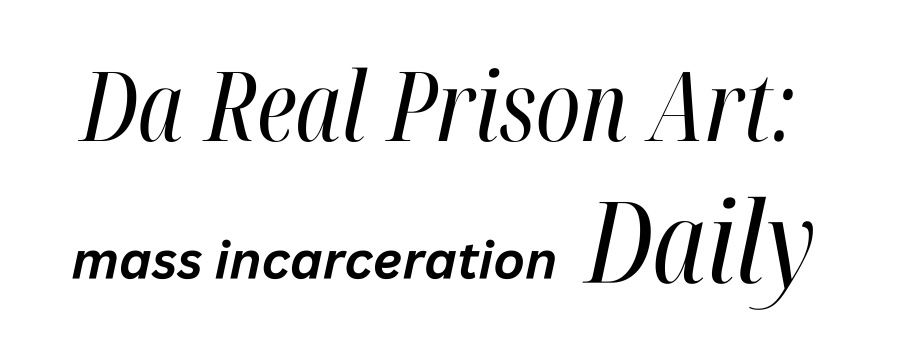Sign up for the Slatest to get the most insightful analysis, criticism, and advice out there, delivered to your inbox daily.
Before it became a useful weapon to deploy in making threats against immigrants in the U.S., or a chilling symbol of America’s slide toward fascism, depending on your partisan alignment, the CECOT prison in El Salvador was a subject of YouTube fascination.
“We’ll test your limits and see if you have what it takes to survive Latin America’s biggest prison,” one video from January 2025 promised.
The notorious megaprison was particularly enticing for the types of young male influencers who specialize in extreme travel, taking their followers into dangerous neighborhoods, isolated tribal lands, rowdy night markets, and harsh climates. In their YouTube videos, these content creators, some with many millions of followers, promised to take their audience inside “HELL ON EARTH” to gawk at “the most evil” criminals, to experience life as a prisoner, and to marvel at people surviving such brutal conditions with their sanity intact. The Terrorism Confinement Center, or CECOT, which opened in 2023 and can currently hold around 40,000 prisoners, drew these creators because of the nightmare concept behind it: The prison was designed as a one-way destination. No one would ever leave its walls alive.
CECOT entered the mainstream American public consciousness in March after the Trump administration sent 238 migrants to the Salvadoran megaprison without trial and in violation of a court order as part of a deal with El Salvador’s President Nayib Bukele. Family members of the deported immigrants have said that some of the men sent there were not gang members and that they were wrongly accused because of their tattoos; the U.S. government acknowledged that some had no criminal records in the U.S. Some of the men, such as makeup artist Andry Hernandez Romero, are clearly not the tough gang members Donald Trump and Bukele have insisted they are. In one case—that of Kilmar Armando Abrego Garcia—a man was sent there because of what the administration admitted was an administrative accident. The prison has become a source of terror for immigrants in the U.S., and Trump has even threatened to send U.S. citizens there. The men there already have essentially vanished into a black box.
But the prison itself, as YouTubers saw it in the time before it made U.S. headlines, was more a matter of curiosity. This notorious maximum-security facility, built for the world’s “most dangerous criminals,” was designed to neutralize entire gangs. It is a visually striking physical space addressing a click-worthy subject. For most of the creators who made videos touring the prison, the CECOT video is among their top most-watched videos.
The influencers who created these videos are mostly men, and mostly make their living off travel videos, food vlogs, and filmed stunts with titles such as “Visiting the COLDEST CITY in the World”; “Lost and Drunk in Medellin’s Dodgy Streets!”; “SURVIVING with the LAST TRIBE that EATS HUMANS”; and “SCAMMED IN THE WORST RESTAURANT OF MADRID according to TRIPADVISOR.”
According to Samuel Woolley, who researches computational propaganda as a professor at the University of Pittsburgh, even before the prison moved to the center of American political debate, the CECOT videos reflected a trend in how political entities are thinking about the utility of influencers. It’s not just Trump inviting right-wing content creators into the White House or Vice President J.D. Vance going on Joe Rogan’s podcast. More and more, Woolley said, we’re seeing seemingly apolitical influencers being courted for their audiences.
These creators have their own imperatives to keep audiences satisfied with increasingly extreme and exciting material. And when those needs align with the desires of a self-described dictator, you can get this: men in T-shirts and clip-on mics marveling at state-of-the-art security systems, tasting prisoners’ food, trying on prisoners’ shackles, toying with acoustics in the solitary confinement cell, pointing out gang tattoos—all while walking past men who have been, effectively, disappeared by their governments.
“Many influencers would like to say, ‘I’m not a political person: I’m just showing content so people can engage in it,’ ” Woolley said. “They’re still performing a political act. … What they’re doing can be leveraged by anyone, including governments, for the purposes of coordinated propaganda.”
These creators also hail from around the world and broadcast to huge audiences. A Saudi influencer who toured the prison has 16.3 million followers; a Turkish YouTuber has 13.5 million; a Mexican creator, 44 million. As part of their business model, their personas are meant to appeal to everyone and not target a narrowly partisan group. They were, as they presented it in the videos, simply explaining a situation, mentioning a controversy, but not taking a hard stance. In reality, they were treating the product of an authoritarian leader’s crusade—a place that threatens a lifetime of cruel punishment without due process—as a topic for darkly voyeuristic viewing, a 20-minute bit of entertainment before moving on to another all-caps title the algorithm had queued up.
CECOT was built to a scale to match Bukele’s grand ambitions. In 2022, Bukele launched a major police crackdown on the country’s two major gangs, suspending constitutional rights and rounding up tattooed men by the thousands. (These indiscriminate arrests were sometimes accompanied by equally unfocused mass trials.) These mass arrests followed other authoritarian moves by Bukele, including a 2020 incident in which he sent soldiers into El Salvador’s parliament building to intimidate lawmakers and replaced the country’s Supreme Court judges with his own allies in a naked power grab that allowed him to reinterpret the constitution. In El Salvador, where gangs had long terrorized the country, such tactics have made Bukele overwhelmingly popular. Bukele’s boosters often mention the official claim—called into question by critics—that the country went from having the worst murder rate in the world to one of the lowest.
CECOT, constructed to hold this vast new population of inmates, is not the only worrying prison in El Salvador. Amnesty International has accused the country of replacing gang violence with state violence, including torture and beatings in prisons, and claimed that at least 132 people who had not been found guilty of crimes had died in state custody. But CECOT is Bukele’s ultimate political statement: a monument to his ruthless victory over the gangs.
The images from inside CECOT that you see if you watch these YouTube videos are indeed arresting: From their cells, inmates in all white, covered in tattoos, heads shorn, cluster by the dozens at the bars and gaze at the camera, presenting their expressionless faces—the only way, the influencers say (quoting prison officials), the prisoners can have any hope their families will find out where they are. It was these extreme images that made them such good fodder for YouTubers.
As one of them put it in his video: “The world’s most dangerous gang leaders are just a few steps away.”
The only natural light the inmates will ever see again, the influencers are told, will come from tiny gaps in the ceiling. They will get half an hour a day to exercise in the hallway (using their body weight); otherwise, they are allowed no freedom of movement, no recreation. In their cells, where they are crammed in with some 70 other prisoners, they get no mattresses, no blankets or pillows—only metal bunks. They have no privacy for the toilet; they all share the same small amount of bathing water. They eat their meals of rice, beans, and tortillas with their hands. They will never receive visits from family members or lawyers. The bright lights never shut off. There is no distraction from the endless, maddening hours of comfortless existence.
“You can see the emptiness in their soul,” Turkish content creator Ruhi Cenet says in his February video, which has 96.6 million views. “They don’t have any hope toward the future.”
Some content creators have addressed the controversy surrounding the prison. Cenet notes that “a small number of innocent people had been mistakenly imprisoned” and that their family members “have no idea where they are or if they are still alive.” A Spanish YouTuber, whose February 2024 video has 13 million views, interviewed a professor who discussed the importance of addressing the underlying issues in the country that allowed gangs to flourish. Some acknowledged the reality: Because people were imprisoned in chaotic mass roundups, and largely based on tattoos, we can’t know if they were all actually murderers. CECOT undoubtedly holds many gang members responsible for horrific crimes. But even before the Trump deportations, there were reports that prisoners had not been given proper trials and that many had been imprisoned erroneously.
But most who toured the prison were likely to speak positively of what they saw. “Maybe you’re wondering: What did these gang members do to deserve this? To live through Hell on Earth?” a chipper Costa Rican influencer says in his January 2025 video, which has 16 million views. “I will tell you three examples of the thousands of crimes they committed.” Later, he concluded his video by saying he “felt a great relief knowing that these people can no longer cause harm.” A Greek influencer says, in an October 2024 video, that he was “told every person who’s here has killed someone” and that critics complaining about the prisoners’ rights were ignoring that the gangs “never respected the human rights of the local people of El Salvador.”
“Seeing these images, it’s easy to be moved, to clutch your heart and say, ‘Wow, what harsh mistreatment there is inside the prison,’ ” a Mexican creator known as Luisito Comunica, whose February 2024 video has 56 million views, says. “But when you learn about the human atrocities they have committed, it all makes sense.”
To Bukele, it may not matter whether the influencers mention the controversy: He appears to feed off the angst on social media, posting like a far-right troll on X.
“You have to understand that it’s a necessity, an obsession of Bukele, for attention,” said Ricardo Valencia, a former press officer at the Salvadoran Embassy in Washington and a public relations professor at California State University, Fullerton. “He controls everything in El Salvador. He believes his next step is to become an international figure.”
To get there, Valencia reasoned, Bukele is tapping into the global online far right. When CECOT was completed, the government put out a video with drone shots giving a sense of scale, and another showing off a subsequent haul from his #GuerraContraPandillas (war against gangs): rows of shirtless men on the ground, pressed so tightly against other prisoners that their heads are bowed into each others’ backs, legs forced out to the sides, like a massive centipede. In March, when the Trump administration sent its deportation flights, Bukele posted to X a slickly produced video showing the men arriving; masked guards roughly pushing them toward the entrance, and forcing them to their knees to have their heads shaved; inmates flanked by guards rushed forward in an awkward squat, their wrists and ankles connected by a chain.
“He believes it’s useful for the whole horror-movie aesthetic the MAGA administration is doing with immigration,” Valencia said. The administration has released propaganda content playing up the danger of migrants and the muscularity of U.S. law enforcement.
Adrienne Russell, the co-director of the Center for Journalism, Media, and Democracy at the University of Washington, also saw an appeal to the far-right internet culture abroad, making Bukele’s movement out to be brutally masculine, purged of empathy, unconcerned with rules or shocked objectors (in this case: human rights advocates). Some authoritarians hide their ruthlessness; Bukele, as part of the proud modern far right, wants to stream it to the world.
To be clear, in their videos, the content creators imply that they had been the ones to press for access, and that getting in had required persistence. That doesn’t change that they were welcomed in, that Bukele saw no risk in allowing the outside world to see the harsh environment he had created.
“This is a strategy,” Russell said. “It’s not just like they walked by and started shooting. They were invited, given information.”
Slate reached out to the influencers to learn how and why they ended up touring CECOT, and only one responded. Timmy Karter, a Greek content creator, wrote in an email that he had not been invited and that he had not been paid. He wrote he noticed that no authority in the prison spoke English—the language he spoke in his video—so he felt free to say whatever he wanted (“which is crazy haha”). No one checked his footage or reviewed the video before he posted it (“which is also crazy”). He had ended up there by working contacts, he said. “I don’t think if I ever film in other countries with people from the government … I’ll ever have such a freedom of storytelling, for real,” he wrote.
News media have also been allowed to film inside CECOT. Their inclusion is part of Bukele’s strategy, too. But news media operate under journalistic ethics; YouTube content creators have no professional obligation to question what they are told by the Salvadoran government. When the creators are told that “every” prisoner there has committed murders, rapes, and other heinous crimes, they have no mandate to fact-check.
It’s understandable why someone such as Karter, who has branded himself as an explorer of dangerous places, would seek out CECOT. It’s also, in a dark way, easy to see how even food-travel vloggers might see the appeal: It’s the biggest, newest, most brutal megaprison in the region—great superlatives for a title card.
“There’s been a trend in the influencer industry towards doing more and more extreme, sensational, and shocking things in order to garner views,” Woolley said. “And it includes things like acts of violence and breaking the law. It includes doing things like implicitly condoning human rights abuses at one of the world’s worst prisons.”
One influencer who toured CECOT was different from the others. A creator named Nick Shirley, who toured in July last year, has a much smaller reach, less than half a million followers. And yet his video from inside the prison was one of the few that Bukele himself promoted on social media. That’s because Shirley is American, with a specific audience that Bukele wants to reach. More than the other CECOT influencer visitors that have been mentioned, his videos are explicitly political, with titles such as “IRL Confronting Anti-Elon Protesters at Tesla,” “Asking People at DNC What Makes Kamala Qualified to Become President,” and “Inside NYC’s Most Dangerous Migrant Hood.”
His video inside CECOT wasn’t very different from the others, apart from being a little less polished. But where he differed was in what he brought back to the U.S. On Fox News on March 29—an appearance he made after the Trump administration had sent Venezuelan immigrants there—he described coming “face-to-face” during his visit “with some of the worst people roaming the Earth right now.” When asked if he was “at all concerned that perhaps some of them were there that shouldn’t be there,” he dismissed the concern: “Not really. You could see the tattoos on their chest.” (To be clear, he had not seen all of the men held there; some critics have argued that the heavily tatted gang members presented for influencers and journalists are not representative of the whole population.) When the segment ended, he signed off with a “Let’s go, El Salvador.”
Shirley is part of a new cohort of right-wing content creators with open sympathy toward authoritarianism. In the U.S., many influencers have praised Bukele and his antidemocratic tactics; the Daily Wire’s Michael Knowles quipped that he wanted to nominate Bukele as the Republican presidential candidate in 2028. Charlie Kirk called Bukele a “once-in-a-generation leader.” Tucker Carlson titled his interview with Bukele “President Nayib Bukele saved El Salvador. He may have the blueprint for saving the world.” Bukele has styled himself as “the world’s coolest dictator,” and pro-Trump influencers seemed inclined to agree.
Both Bukele and Trump have come to appreciate the value of this type of YouTuber in the war of ideas. Bukele reposted Shirley’s CECOT video, which has 5.7 million views, as well as another video Shirley made praising El Salvador’s “Zero Idleness” work program for other prisons, which people in his comments likened to slave labor. (One comment on X: “bro is doing concentration camp propaganda.”) And on April 14, when Bukele visited the White House, Shirley was there as a credentialed member of the press. (He also used the opportunity to create flippant meme content, mistakenly called the meeting a “briefing,” and boasted about “confronting” CNN afterward.)
Shirley’s follower count undoubtedly benefited from his access to the prison. But his utility to Bukele, along with that of the other YouTubers, became irrelevant once the deportation flights began and the figures of actual power in the U.S. took notice.
Since the Trump administration sent the Venezuelan migrants to CECOT, the visitors have been politicians and journalists rather than content creators. Kristi Noem toured the prison in a $50,000 watch, taking photos in front of the cells.
“If you come to our country illegally, this is one of the consequences you could face,” she said in a video from the prison. “Know that this facility is one of the tools in our tool kit that we will use if you commit crimes against the American people.”
Her tour was followed by visits from other Republicans, including Reps. Riley Moore, Jason Smith, Mike Kennedy, and Claudia Tenney. Democratic Sen. Chris Van Hollen was denied entry when he tried to see Abrego Garcia, his constituent, and was only able to see him when he was moved from CECOT to a detention center in Santa Ana, El Salvador—making him the first known prisoner to actually leave CECOT. Earlier this month, House Oversight Committee Chair James Comer rejected a request from Democrats to visit CECOT. Four Democrats went to El Salvador anyway but did not go to the prison. (On X, Bukele reposted another post asking “Do you support El Salvador DENYING Multiple Dem Representative’s requests for a meeting today?”)
It seems likely that CECOT won’t be safe material for YouTubers any longer, at least in the U.S., unless those content creators are willing to wade into a tense political matter. The politicians have taken over the conversation, either championing the prison as a great innovation in the war against violent immigrants or pointing out the horrors of the Trump administration’s reckless deportations.
They, at least, are gesturing to the extraordinary nature of the situation. For an unknown number of Americans who were first introduced to CECOT through a bit of YouTube shock content, it will be hard to feel the emotional punch of learning immigrants are being sent to this inhumane megaprison. If they were among the millions who watched these videos, they saw it through the eyes of young men delighted by the frightening tattoos, fixated on the alleged body counts of the murderers housed there, and wowed by the impenetrability of the facility itself. The influencers nodded to the controversy of the human rights violations but didn’t dwell on it. On YouTube, CECOT is a bit of fun trivia, maybe an interesting solution to a problem—all to be chatted about in the comments below.
This post was originally published on this site be sure to check out more of their content.










